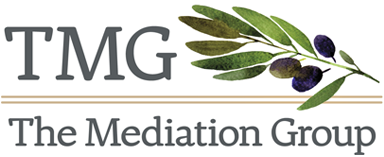Loraine Della Porta on the Challenges of Public Engagement Processes

Our organizational team has a wide range of experience working with different organizations and delivering different types of services. Past clients have been for-profit and non-profit groups struggling with conflict and planning for future changes.
One TMG consultant, Loraine Della Porta, has unique experience working with public-sector officials and organizational leaders to design and facilitate effective public engagement processes. Over the past several years, she has worked with officials from the local, state and federal sectors to help build their capacity to bring people together in a civil and respectful way to address issues of common importance, to solve shared problems, and to (hopefully) bring about positive social change.

She has been able to demonstrate the value of reaching beyond the “usual suspects” and the loudest voices to bring in people who have been traditionally left out of political and policy debates. This has helped leaders and decision makers to better understand the perspectives of citizens and stakeholders and make more informed policy decisions. However it is not always easy. Usually these types of issues include many stakeholders involving large groups of people and are fraught with mistrust.
Read on as Loraine describes the challenging tasks in public engagement processes.
“In the public sector work I have done, one of the most challenging tasks has been to get the sponsor or convener of the process comfortable with trying a different approach to public engagement or decision-making than he or she is used to. People are often very reluctant at first and I completely understand why. We are asking them to do some new and potentially scary things. First, to put their trust in a process they have probably never been through before and which requires them to transfer some of their power and control to others; and second, to put their trust in us as facilitators to help guide them through the process. I fully expect people to be skeptical and resistant, in fact… I’d be concerned if they weren’t. Rather than try to “sell” someone on the idea of a collaborative process, my approach has been to invite potential sponsors or conveners to speak with others, like them, who have been through similar processes. I find that when an agency leader or a CEO can talk with another agency leader or CEO about their experiences with a process like this, it can be much more compelling than asking them to take my word for how well it can work. I also try to provide case studies and examples of similar types of processes, which have worked well and also that have failed, so they have realistic expectations of what is and what is not possible to achieve.
Another challenging task, particularly at the outset of a process, is to get people comfortable with the idea of sharing information and collaborating, particularly where there is a history of conflict or mistrust between them. It is easy to work with people with whom we share similar ideals, goals and values, but the thought of working collaboratively with “the other side” can be daunting. People sometimes think, at least initially, that if they participate in a collaborative process, they are going to be pressured into reaching a compromise or giving up something they hold dear. So again, we as facilitators have a healthy dose of skepticism and suspicion to overcome. For me, the best approach has been to begin by just listening very deeply to what people involved in a conflict really care about. I try to peel away the outside layers and listen for not only the concerns, fears, and frustrations as they are presented - but also to the personal values and aspirations that underlie them. I try to help people to identify their own interests and then coach them on how to articulate their interests to others in a non-adversarial way and at the same time, to be open to hearing about the needs and interests of others. It is typically at this stage of the process when people start to realize they have some common interests and that they might not be as far apart as they once thought they were. I find it is easier to get people working together toward a resolution when you can start by helping them to see what unites them, rather than with what divides them.”
